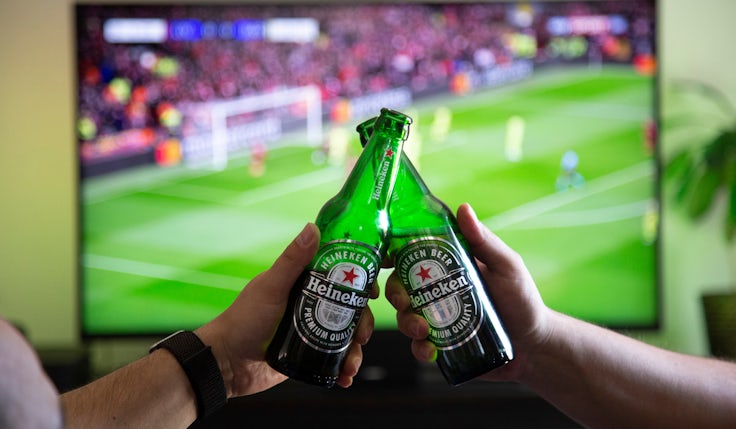Opposing price strategies: How McDonald’s and Kraft Heinz are hoping to beat inflation
McDonald’s has pressed forward with price hikes this week, having already demonstrated the ability to do so without affecting sales. Meanwhile, Kraft Heinz and Nestlé are struggling to find the right balance.
 With sky-high inflation continuing into 2023, albeit at a marginally lower rate, navigating pricing remains a prominent challenge for marketers. While brands have to cover their own rising costs, price hikes risk alienating customers.
With sky-high inflation continuing into 2023, albeit at a marginally lower rate, navigating pricing remains a prominent challenge for marketers. While brands have to cover their own rising costs, price hikes risk alienating customers.
That challenge has been exemplified this week in announcements by McDonald’s, Nestlé and Kraft Heinz. Both of the former have pushed on with price rises as they wrestle with food and energy costs, while the latter has pulled back after recording sales volume declines.
At McDonald’s, price rises across five core menu items have been implemented in the UK. The price of a medium carbonated drink, triple cheeseburger, bacon double cheeseburger, bacon mayo chicken, and mayo chicken have all jumped by between 10p and 20p, with the 99p mayo chicken now priced at £1.19.
It’s far from the first price hike the fast food giant has executed in the past year. Last summer the price of a cheeseburger was raised for the first time in 14 years, alongside other menu items such as breakfast meals. Globally, the company increased menu prices by double digits in 2022.
And yet, despite demanding more money from its customers, the number of visits to McDonald’s restaurants rose 5% last year, driving sales growth of 10.9%. It therefore seems unlikely that the latest price rises will have any notable negative effect.
No doubt the strength of the McDonald’s brand has played a vital role in retaining customers through these changes. Speaking to investors after reporting estimate-beating sales and profits last month, CEO Chris Kempczinski praised the business’s “best-in-class marketing machine” effusively, claiming the brand is “in the strongest position it’s been in years”. Further investment in creative excellence is planned this year, part of the brand’s ‘Accelerating the Arches 2.0’ strategy.
McDonald’s CEO: ‘Our brand is in the strongest position it’s been in years’
Finding the balance
Nestlé also plans to ramp up prices further this year, having fallen considerably short of analyst expectations with its profits for 2022. The maker of Nescafé coffee, Häagen-Dazs ice cream and Milkybar chocolate reported full-year profits of 9.27bn Swiss francs (£8.34bn) this week, compared to the 11.58bn francs (£10.42bn) analysts had forecast.
Despite raising prices by 8.2% last year, the world’s largest food and drink company failed to fully offset the impact rising ingredient costs had on margins.
CEO Mark Schneider told reporters: “Our gross margin is down about 260 basis points – that is massive. That is after all the pricing we have done in 2022.”
Schneider declined to reveal the exact price rises planned, but with growth in sales volumes having slowed to just 0.1%, the business will need to find the right balance to bring margins back up.
Achieving that balance is a problem Kraft Heinz is also facing. It has paused further price hikes in Europe, North America, Latin America and most of Asia in hopes of stemming volume declines.
Marketing’s pay inequalities and McDonald’s brand strength: Your Marketing Week
The FMCG giant behind Heinz, Philadelphia and Lunchables reported net sales growth of 10% in the fourth quarter of its fiscal year, reaching $7.38bn (£6.1bn). It also swung to a profit, as net income grew 447.9% to $887m (£736m).
However, growth so far has “all been driven by price”, global CFO Andre Maciel said. Prices rose by 15.2%, while volume sales declined by 4.8%.
“Volume is still negative. Obviously it improves throughout the quarters as we start to lap the prices, but even at the end of the year, it will still be negative,” Maciel continued.
“As we think about the future, it’s not the balance we want. We want a good balance as we think about top line growth between price and volume.”
Utilising price architecture
Where McDonald’s and Kraft Heinz come together, however, is on price architecture. Both are expanding their range of products to provide consumers with options at all price points, in a bid to retain them as customers.
“Those consumers [who] are going to dollar stores, we’re actually improving the number of SKUs that we have available to them. So that way, there’s a point in which they can come into the category,” said Kraft Heinz’s executive vice-president and president of the North America zone, Carlos Abrams-Rivera.
Meanwhile, McDonald’s is trialling a new ‘Saver Meal’ initiative at 120 outlets in the South East of England to allow consumers to purchase cheaper meal deals. The business told the BBC it hopes “to understand if this could be an additional way to offer value to our customers”.
The latest data from the Office for National Statistics (ONS) revealed UK inflation slowed faster than expected in January, with prices rising at an annual rate of 10.1%. Economists had expected to see a rate of 10.3%, after a 10.5% reading in December.







